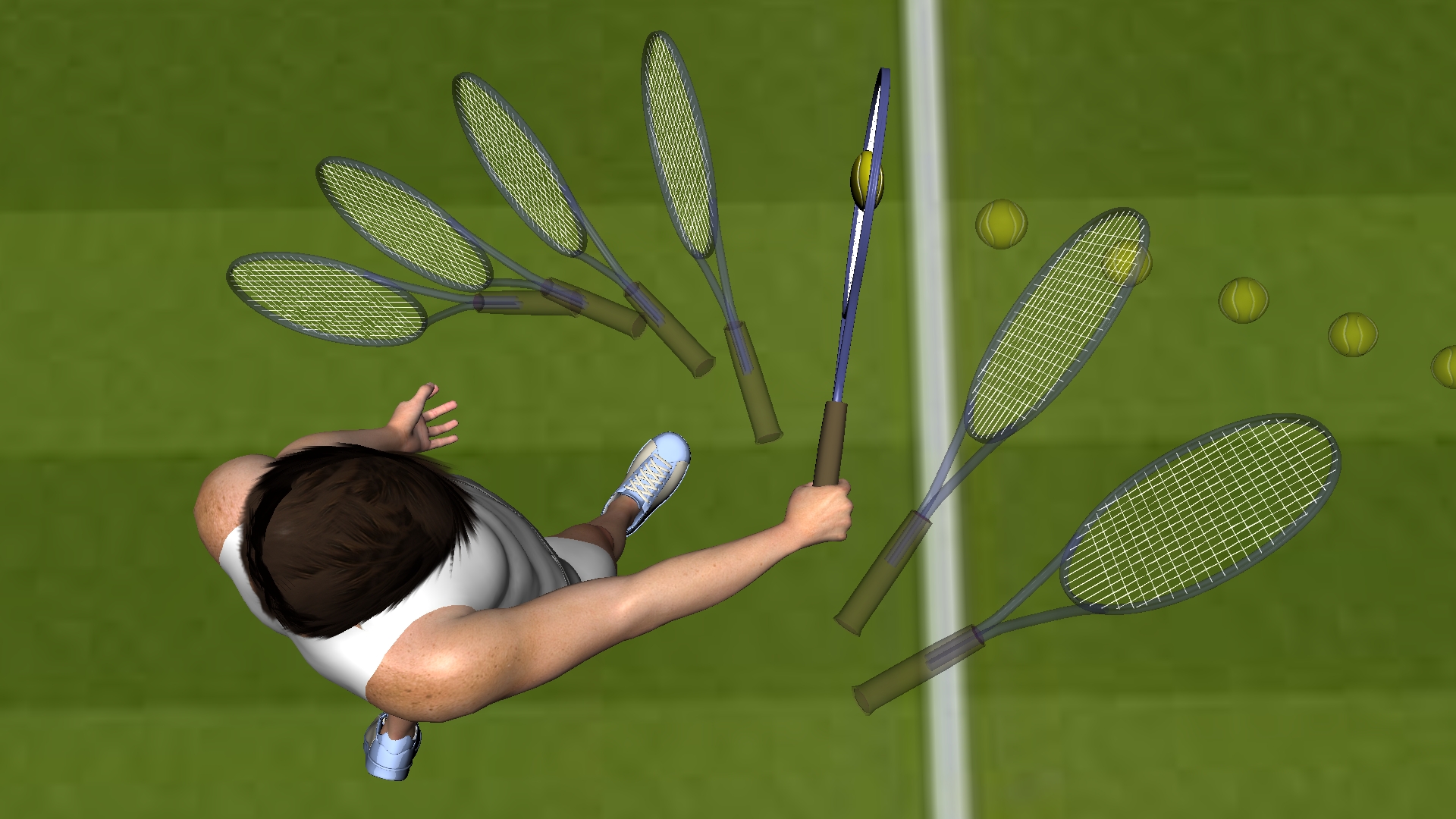Mis-hit Syndrome
Always embarrassing and often tragic, failure to hit the ball solidly is a particularly vexing and common problem for those of us who are evolutionarily challenged. The ability to bring the tennis ball together with the sweet-spot of the racket is a tremendous advantage in a tennis match. When I taught tennis to children, I could easily identify the little tykes who were destined to go from beginner to beating me by the end of the summer. Even when they were hitting moon-balls over the fence, they always hit the ball in the dead center of the racket with a lovely and (for me) annoyingly perfect "ping".
This magical match-making of ball and strings has been called "addressing the ball", which is a boring and loquacious phrase but apt. The key is obviously to anticipate where and when in timespace an oncoming ball, accounting for its pace, spin, the wind, bounce yadda-yadda, is going to be when it is available for you to strike it. Right. Of course, we don't even know exactly where or when that will be or if the ball will ever actually reach an accessible location in spacetime. My point, I think, is that there is no figuring this part of the thing out. It is a miracle every time the racket finds a ball. Some are blessed with the ability to create more and better such miracles than others, and I am not one of them. Still, there are good habits you can learn to improve your ability to address the ball and bad habits you have now that you can identify and eliminate. If you learn to minimize miss-hits, you can save yourself a ton of embarrassment and win a few more matches.
Tracking the Ball
The simplest and most direct correction you can make in this context is to stop trying to track the ball with the head of the racket Guiding the racket face to the ball would seem the most logical way to arrange a meeting, but the plain fact of the matter is that you are not in direct control of the head of the racket.
- Chief Complaint
- "I cannot make solid contact!"
- Symptoms(Sx):
- excess vibration on contact
- shanks and whiffs
- feeling cramped or rushed
- Signs(S):
- shanking on groundstrokes
- into alley
- off tip or bottom of racket frame
-
Pathophysiology(Px):
- swinging too early or fast
- trying to add more topspin or pace
- driving through the ball
-
Treatment(Rx):
- Relax immediately before contact!
- hips and shoulders slow down
- "let the racket do the work"
-
Pathophysiology(Px):
- no control over timing
- not stepping or leaning in
- failure of footwork
-
Treatment(Rx):
- Translate hips and shoulders during stroke
-
Pathophysiology(Px):
- bent elbow at MOC
- attempt to "reign in" stroke for 'control'
-
Treatment(Rx):
- fully extended at MOC
- lock elbow
- shanking on hard volleys
-
Pathophysiology(Px):
- prognostication
- committing to a POC too early
- panicking
-
Treatment(Rx):
- don't panic
- take your time
- meet the ball
- don't just "stick out your racket"
- prognostication
- shanking on groundstrokes
- Differential Diagnosis:

